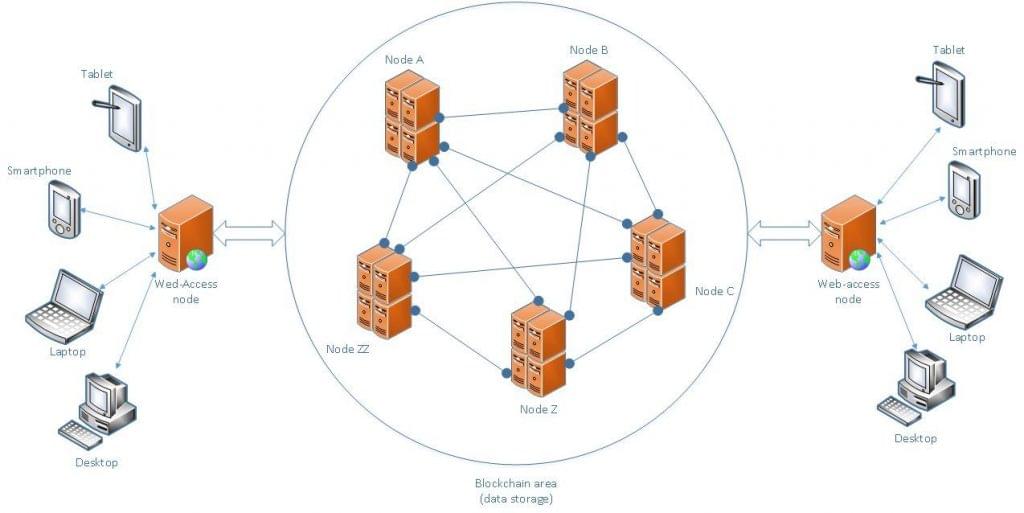Challenge
“Our life would be much easier if we had a highly tamper-resistant and safe information storage database with all car fines comprised!”
Modern technologies permit us to recognize a car number automatically. So, we can identify with a high level of veracity the specific transport mean. By creating a record set with license numbers, time markings, and fine details, we can build a comprehensive system for regulating all car fines. Operating principles via web interface, authorization restrictions, and user accounting have become our challenges to meet.

“We use here Blockchain Technology to ensure high qualitative and continuous work of the Database created. The key benefit of such solution is an exceptional security of the data stored along with low expenses on hardware.”
What Do We Offer as a Solution
To meet our goals, we make the following proof of concept. Solution architecture includes Blockchain Node, Web-Access Node, and User Devices. Such structure permits us to address all crucial problems.
• Blockchain Node contains all data and is connected with other solution nodes;
• Web-Access Node can receive/transmit data and, more importantly, ensures a highly qualitative User Interface. It also guarantees load balancing and operational continuity;
• User Devices are any gadgets providing an opportunity to work with a web browser. They are the ones end-users work with while applying the solution.

How Does Blockchain Technology Work?
The solution is easy to use but still has a lot of useful and substantial features.
- Primary Data Entry
In the first stage, the database is filled with primary info on the basis of existing registries of car fines. It’s also essential at the very beginning to create authorization rules for employees of regulatory institutions.
- System Entry
To ensure a high level of security, we can apply different ways of user authentication: password, face recognition, etc. For identification of user’s access rights, we apply a verification mechanism on the base of Blockchain Technology, thus preventing breaches and unauthorized access to the system.
- Data Record
All information entered by the user is automatically saved in the system using Blockchain Technologies. Data for a new license number, car number change, new fine imposed, or paid fine will be securely kept in the System.
- Information Filtering
Using different filters, the user can filter records and receive the specific information he needs.
- Information Editing
Users can easily read, edit, or delete any information. At the same time, all data, once entered into the system, is kept safe in the archive, and all changes are recorded.
Advantages of Applying Blockchain Technologies
End-users and regulatory institutions benefit equally from applying the Car Fines Distributed Database. Among key benefits are Distributed Data Storage and Authentic Information Reading.
- Distributed Data Storage
Blockchain Technologies allow us to guarantee continuous access to the full scope of information stored. It’s performed due to the safekeeping of all data in every node of the chain. In case some nodes become disabled, there is at least one node where all data is saved.
- Authentic Information Reading
The system confirms the authenticity of all information stored. It’s achieved due to automatic verification of the specific information block presence in every node of the chain – once it’s read.
PEOPLE ALSO READ

WhTech-WMS: Warehouse Management Software
With WhTech-WMS you can manage access and always know the location of your assets. It allows you to create custom reports and keep an eye on real-time alerts due to crashes or emergencies which gives you the opportunity to always monitor and understand the status of your equipment.

Police Records Management System For Caribbean Countries
Softengi designed, built, and installed the Police Records Management Information System (PRMIS) for the Caribbean region.

Industrial Asset Tracking: IoT Solution on Guard of Coal Mines
Softengi developed an IoT system that retrofits mining facilities with real-time underground tracking, automated dynamic gas detection, advanced connectivity, and alarm.

